
 As the first and best of the three official adaptations of H.G. Wells’ 1896 novel The Island of Dr. Moreau, Erle C. Kenton’s Island of Lost Souls brings the horror elements of the science-fiction tale to the forefront. The film remains chilling even today, despite having the most primitive of technology.
As the first and best of the three official adaptations of H.G. Wells’ 1896 novel The Island of Dr. Moreau, Erle C. Kenton’s Island of Lost Souls brings the horror elements of the science-fiction tale to the forefront. The film remains chilling even today, despite having the most primitive of technology.
Pomade-haired shipwreck victim Edward (Richard Arlen) is brought to the title tropical site where the arrogant, power-mad scientist Dr. Moreau (Charles Laughton, looking a little like Fat Hitler) rules over his House of Pain, a laboratory where he creates ungodly mutations of half-men/half-beasts. Some resemble wolves, simians, even owls; all cower at the crack of their maker’s whip.
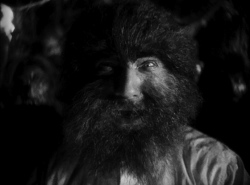 A victim of censorship, Island contains some crazy-ass ideas it has to dance around rather than discuss outright — namely, Moreau wanting to unleash his panther woman, Lota (Kathleen Burke), on his good-looking guest, Edward, to see what would happen if he would put his pee-pee into her hoohah until he had a big tickle. (Has the porn industry not leapt upon this idea yet?)
A victim of censorship, Island contains some crazy-ass ideas it has to dance around rather than discuss outright — namely, Moreau wanting to unleash his panther woman, Lota (Kathleen Burke), on his good-looking guest, Edward, to see what would happen if he would put his pee-pee into her hoohah until he had a big tickle. (Has the porn industry not leapt upon this idea yet?)
With expansive sets and excellent make-up effects, Island is a feast for the eyes, even in black and white. It’s also startlingly as relevant, with the particular issue of evolution still ridiculously as hot-button as ever. Perhaps one day, we as a society will be able to acknowledge the possibility of a higher power and let man fuck leopard whores freely and without judgment. One can hope. —Rod Lott

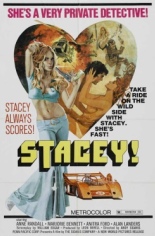
 It may have a
It may have a 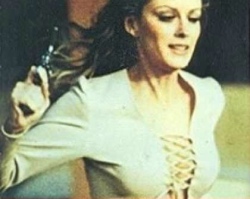 It doesn’t take long for Stacey to find out the chauffeur is banging the whoreish wife and trying to blackmail her with pictures of their trysts. The real mystery comes when the chauffeur is stabbed to death, but Stacey — whether she’s wearing blouses, bikinis or bare breasts — is on the case, lugging her pilot boyfriend around as she investigates. After barely escaping death a second time in one day, he finally asks her calmly, “Stace, will you tell me what that was all about?”
It doesn’t take long for Stacey to find out the chauffeur is banging the whoreish wife and trying to blackmail her with pictures of their trysts. The real mystery comes when the chauffeur is stabbed to death, but Stacey — whether she’s wearing blouses, bikinis or bare breasts — is on the case, lugging her pilot boyfriend around as she investigates. After barely escaping death a second time in one day, he finally asks her calmly, “Stace, will you tell me what that was all about?”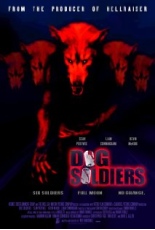
 Set in the Scottish highlands, the inexpressibly splendid
Set in the Scottish highlands, the inexpressibly splendid 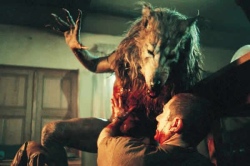 In his directorial debut, Neil Marshall (
In his directorial debut, Neil Marshall (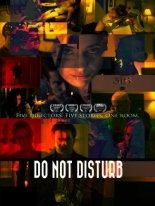

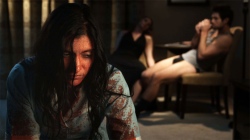 During a student trip, a white gay guy has to room with a black straight guy. Nothing happens. I don’t mean sexually — I mean nothing happens. (At least the movie is consistent.) Finally, there’s a two-parter (seemingly to stretch the film to its big, bad feature length of 69 minutes) in which a guy thinks he’s going to get his rocks off, but instead gets his kidney stolen.
During a student trip, a white gay guy has to room with a black straight guy. Nothing happens. I don’t mean sexually — I mean nothing happens. (At least the movie is consistent.) Finally, there’s a two-parter (seemingly to stretch the film to its big, bad feature length of 69 minutes) in which a guy thinks he’s going to get his rocks off, but instead gets his kidney stolen. 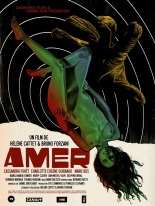
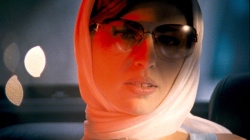 The middle (and shortest) part of Amer finds Ana as an adolescent (Charlotte Eugène Guibbaud) with bee-stung lips and a budding sexuality that threatens to turn into danger, as she accompanies her mother (Bianca Maria D’Amato) on a walk into the dizzying, labyrinthian cobblestone streets of the nearby village. By the final tale, Ana is a full-blown gorgeous woman (Marie Bos) returning to her childhood home now abandoned and in disrepair … and complete with one of those black-gloved, razor-wielding psychos on the grounds.
The middle (and shortest) part of Amer finds Ana as an adolescent (Charlotte Eugène Guibbaud) with bee-stung lips and a budding sexuality that threatens to turn into danger, as she accompanies her mother (Bianca Maria D’Amato) on a walk into the dizzying, labyrinthian cobblestone streets of the nearby village. By the final tale, Ana is a full-blown gorgeous woman (Marie Bos) returning to her childhood home now abandoned and in disrepair … and complete with one of those black-gloved, razor-wielding psychos on the grounds.